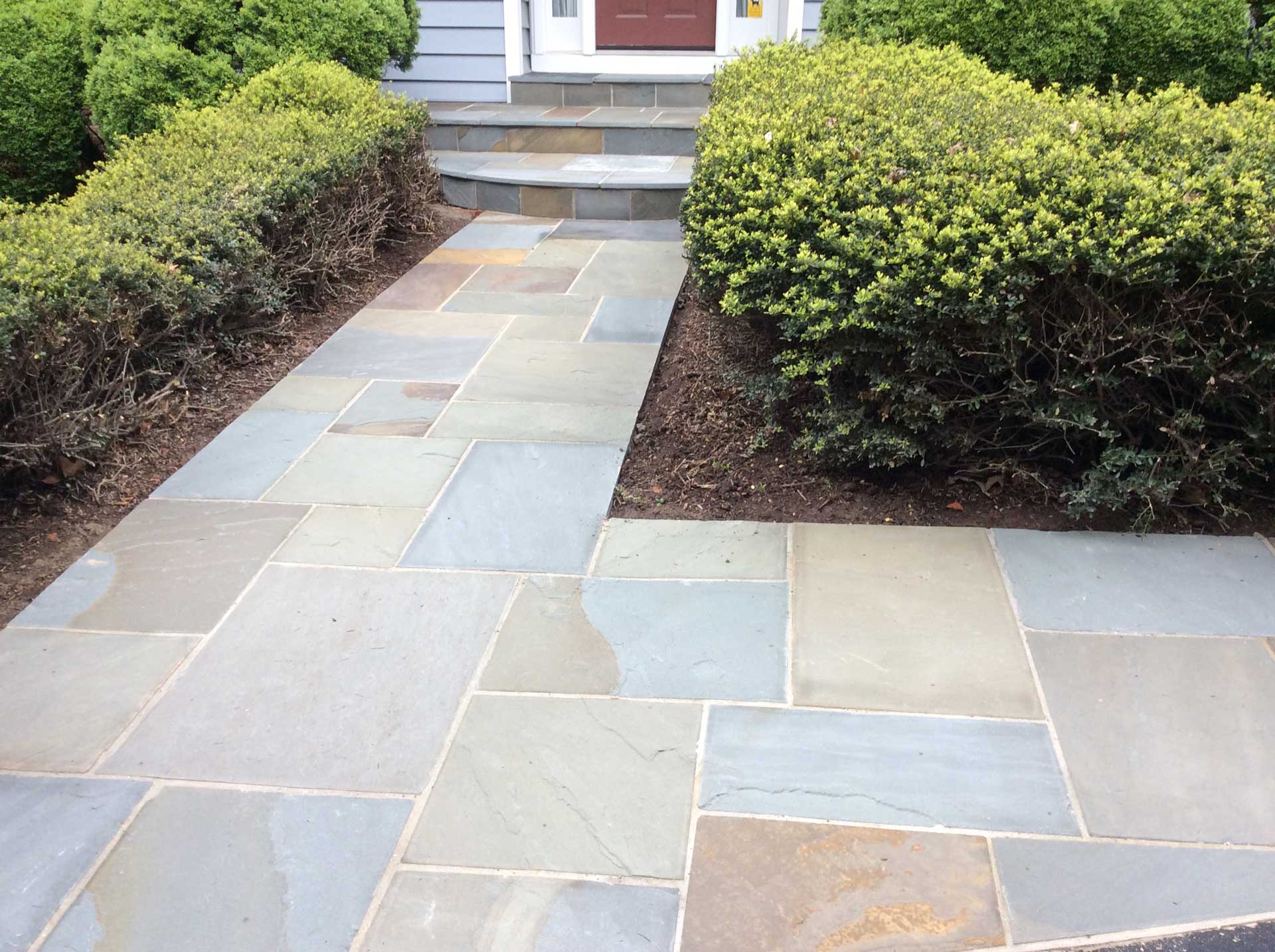Six Tips to Installing Flagstones On a Slope
You’ve been looking at that long, steep slope in your lawn for a long time. You might be tired of climbing up the hill on grass or mud. Maybe you hate the water runoff that tears up your sod every time it rains. A flagstone staircase is an elegant, durable solution to this problem. Here are some tips for installing flagstones on steep hills.
1. Solve Your Slope Problems
Flagstone stairs will help you enjoy your outdoor space. Installing steps makes it easier to go up the slope. If the staircase is leading from the street to your home, it adds enormous curb appeal. A stone staircase is safer than a steep, grassy or muddy hill.
A stone staircase is also a good way to help control erosion. Your stone steps can act as a retaining wall to prevent mud and water from flooding that part of your lawn. A flagstone stairway is a practical, beautiful choice for any hillside.
2. Choose a Staircase Style
The most attractive stone staircases have many landings. Stairways with frequent landings are also easier to climb. Be sure your installation plan includes several landings.
Landings are highly decorative. Use each landing as an opportunity to add flower beds, potted plants, bird feeders, and other garden elements. Your staircase will look gorgeous.
Curved or switchback styles are a good choice. They’re more visually appealing than a staircase that goes straight up. Your flagstone stairway is an opportunity to express your style. Talk to a professional mason about the design possibilities for your slope.
3. Choose Your Stone
Flagstone comes in several colors and shades. Your choice will depend on the predominant colors of your house and the rest of your landscaping.
Do you want a native flagstone? In our area, most of the natural flagstone comes from the Pennsylvania mountains. This gives us a flagstone that’s predominantly pink or gray in tone. The famous Pennsylvania Blue Stone is also native to this region.
4. Size Your Steps
When you choose your step size, you may hear the terms “rise and run.” They refer to the height and depth of each step. You need to know this to calculate the size of the steps you need for your project. There is a mathematical formula to determine this.
What’s the formula for the perfect rise and run? Twice the rise plus the run should equal 25 to 27 inches. When you’re calculating rise and run on a slope, you may have to change the length of the stairway to keep the rise and run at that ratio. A longer run or depth lets you a have shorter rise or height. If you want steps with shorter runs, you’ll need higher rises.
A professional mason can determine how many steps you need and the sizes of each.
5. Go With Mortar-Set Installation
We’ve previously discussed the differences between dry-set and mortar-set stone installation. We always recommend mortar-set installation because it’s more durable, attractive, and secure than dry-set stonework.
You should not attempt to do this yourself. Installing mortar-set flagstones is a labor-intensive job that requires experience and special equipment. IF you want professional-looking results, hire a professional mason.
6. Add a Sealer
When the stairway is complete, ask your mason to coat the mortar with a sealant. This will help protect the grout from water damage. You can use a matte or glossy sealer.
Call the Experts at Capital Masonry
When you’re ready to install your flagstone steps, call Capital Masonry. We’re a third-generation masonry with extensive experience building flagstone stairways. We specialize in brick, flagstone, fieldstone, and concrete installations. We’ll create a beautiful, durable stairway that will be the centerpiece of your landscape.
